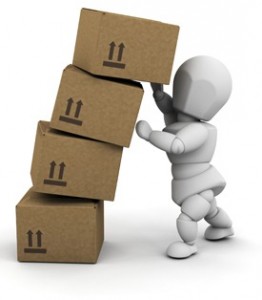In this information age and with the advent of DITA’s topic-based writing practices, it’s not uncommon for companies to get completely overloaded by their  own technical content: thousands or millions of files (maps, topics, and graphics, oh my!), versions, backups, resulting in terabytes of storage. And no one knows exactly what exists and where it may be. Without a content management system (CMS), the situation can quickly devolve to fruitless quests for content: Where is it? Who published what? Does it even exist? Did it exist yesterday?
own technical content: thousands or millions of files (maps, topics, and graphics, oh my!), versions, backups, resulting in terabytes of storage. And no one knows exactly what exists and where it may be. Without a content management system (CMS), the situation can quickly devolve to fruitless quests for content: Where is it? Who published what? Does it even exist? Did it exist yesterday?
If collaboration is your goal, how are your tech writers sharing, single sourcing, and re-using content? Can you quickly determine what content is being used where? How are you managing new versions documentation? Warning: Copying and pasting folders when starting a new release is a common but colossal mistake, one that leads you down a convoluted path.
If your content is a spaghetti-tangled mess of files on a shared file server (or worse, on local drives), it’s time to take control and make an investment into your information assets (yes, every bit of content any writer has ever created is an asset). Put simply, if you don’t know what you have or you can’t find it, you can’t leverage it. And if you can’t leverage it, your writers are working inefficiently. Which means you’re probably leaking money–a lot of money. Congratulations, you just figured out that you have the power to save your company a whack of cash.
Before you go rushing off to your manager, it’s time to get a good, solid foundation in content management systems (CMS).
They run the gamut from free and open-source (needing a LOT of tweaking) to the “Cadillacs” that cost over $100K and look spiffy and can turn cartwheels (automated publishing overnight, extensive workflows, translation management, etc.). A mid-level CMS will cost you around $80K + any related tools/personnel you’ll need. But they all do basically the same things:
- Content storage
- Content discovery
- Content editing
Content Storage
 Your content is stored in the CMS, sitting in a database. Short of a natural disaster, your content can’t be lost or destroyed. (Tip: plan back up to one or two off-site locations just in case.) You can store anything from DITA xml files to any/all media and pretty much everything else digital inside any CMS. But it’s not just sitting there like an ageless invariable lump. All changes are recorded, which means you have a version history of every piece of content that lives there.
Your content is stored in the CMS, sitting in a database. Short of a natural disaster, your content can’t be lost or destroyed. (Tip: plan back up to one or two off-site locations just in case.) You can store anything from DITA xml files to any/all media and pretty much everything else digital inside any CMS. But it’s not just sitting there like an ageless invariable lump. All changes are recorded, which means you have a version history of every piece of content that lives there.
The CMS should provide you with a way to frequently do a “diff” on versions, seeing exactly what has changed and rolling back if necessary.
You can also (no fainting, please) branch your content, leaving the original as it is and then continue updating a different “version” as needed. Warning: It’s not always elegant so be prepared to lay out a thorough strategy for determining why and when to branch content.
The point is that your content is all in one location, sitting safe and sound in a database.
Content Discovery
You can browse around your files but the real advantage is that you can search or query the database to find your content. Depending on the CMS you use, you could find content with the phrase “Prince William” or an element edited by Francine between October and November of last year that did not include the word “Kate” but did have the attribute value “wedding” applied to it. Or anything in between.
content. Depending on the CMS you use, you could find content with the phrase “Prince William” or an element edited by Francine between October and November of last year that did not include the word “Kate” but did have the attribute value “wedding” applied to it. Or anything in between.
Finding your technical content may seem like no big deal, but this is the cornerstone of saving money with a CMS. Know what you have, where it’s used, what it looked like when it was published yesterday and last year, and how you can use it tomorrow.
Tip: Get your writers to search before they write. It’s a hard habit to instil, but if the point is to leverage existing content, they have to look before writing.
Content Editing
Many mid and higher end CMSs will let you edit content right inside the CMS (almost always clunky but nice to make small changes), but all of them let you round-trip your files into the XML or graphics editor of your choice. This is how your writers should work most of the time: Find content in CMS > output to XML editor > write > update database with new content. If you have decided on and configured your XML editor first, then you can narrow down your CMS choice to those that do or are willing to integrate with the editor you have. If you’re open to XML editors, then you can choose the best CMS, and XML editor for you.
Workflows and Translation
Most CMSs have some form of workflow and translation management capability. Workflows might include content creation and editing, peer reviews, approval processes, standards verification, or translation. It’s in this area that CMSs vary the most and if these are critical requirements for you, then you need to get thorough demos, preferably with as much of your own content that you feel comfortable sending their way. I’ve seen everything from simple and basic to so complex it was a pain not only to set up but also maintain. Workflow and translation management are two areas where most CMS vendors are doing their best to improve.
Software as a Service (SaaS)
Many CMS vendors are now offering their tool as a “hosted” solution, where the database is in their control but the content is all yours. They manage upgrades and can help troubleshoot easily and you save on the cost of buying the whole thing outright and needing to manage the database.Take the time to talk with your IT folks to identify IT operational requirements for an SaaS first.
ROI
 The return on investment for a CMS varies greatly, of course, but my own experience has shown that it is anywhere from 2 months to 3 years, and rarely more than that. You’ll have a faster ROI if you’re translating to many languages because that is where the savings on each piece of content gets multiplied by the number of languages you translate to. Each time you update the source language, you translate just those changes, so your savings multiply further by each version x each language. And that can translate to big, big bucks. Keep in mind that minimum fees from translation vendors could negate some of those savings— translating only a few new words for each topic will cost the same as if you had re-written those topics completely.
The return on investment for a CMS varies greatly, of course, but my own experience has shown that it is anywhere from 2 months to 3 years, and rarely more than that. You’ll have a faster ROI if you’re translating to many languages because that is where the savings on each piece of content gets multiplied by the number of languages you translate to. Each time you update the source language, you translate just those changes, so your savings multiply further by each version x each language. And that can translate to big, big bucks. Keep in mind that minimum fees from translation vendors could negate some of those savings— translating only a few new words for each topic will cost the same as if you had re-written those topics completely.
Associated Costs
Often, CMS vendors don’t provide a list of associated costs that will sneak in when you implement a CMS. Consider these when creating a budget for your CMS purchase.
- Content conversion: If your content isn’t already in DITA (or whichever standard you’re going with), you need to convert before you load content into the CMS. Options include doing this in-house or hiring a consultant to do it. Either way, it’s an added cost.
- Database admin: Unless you choose SaaS, you’ll need someone to do periodic database administration, like upgrades and database backups. Likely not a full-time job. Use an internal resource if you can (IT may have someone who can take it on) or hire a specialized firm.
- CMS admin: This is the person who will customize the CMS to do exactly what you want. They’ll do everything from providing training to the rest of the group to enabling features and troubleshooting. They’ll also be the primary contact with Support from the CMS vendor. Depending on the CMS, this could be a half- or full-time role.
- Information architect/tools specialist: Looking at things from a higher level, this role decides what related tools are needed for an end-to-end suite of solutions that will let you leverage every piece of content you have. They will also help you plan to maximize re-use and single sourcing by creating taxonomies and metadata solutions. It’s also their role to decide when to upgrade and which features you’ll need to use.
- Trainer: You may need to get training for your tech writers on your CMS or on the combination of your tools and CMS. Instead of learning through trial and error, some initial investment in this area will bring your learning curve down from the stratosphere and get everyone started in the same direction. This is likely a high initial cost ($5k and up) and then a smaller ongoing cost (tips and tricks, new functionality, refresher training/new employee training, switching XML editors).
- Publishing: Usually customizing the look and feel of published deliverables is NOT included in a CMS and when it is, it can be a pain to master. Make sure you budget time or money for customizing the transforms (like the DITA OpenToolkit or the CMS’s stylesheets) or buying another tool that will transform the look and feel for you.
- Add-ons: A CMS vendor frequently provides add-ons like collaborative review tools and translation modules at an additional cost. Don’t assume the base cost gets you the whole package.
Conclusion
A content management system really can save you a lot of money, sometimes even in just a short time. From simply being able to find your content and understanding how it’s all being used, to being able to version and branch when needed, a CMS can provide much needed functionality to help you leverage your information assets and get your tech writers collaborating on a fundamental level. Now that you understand the basics, it’s time to build up your list of requirements and start getting demos.